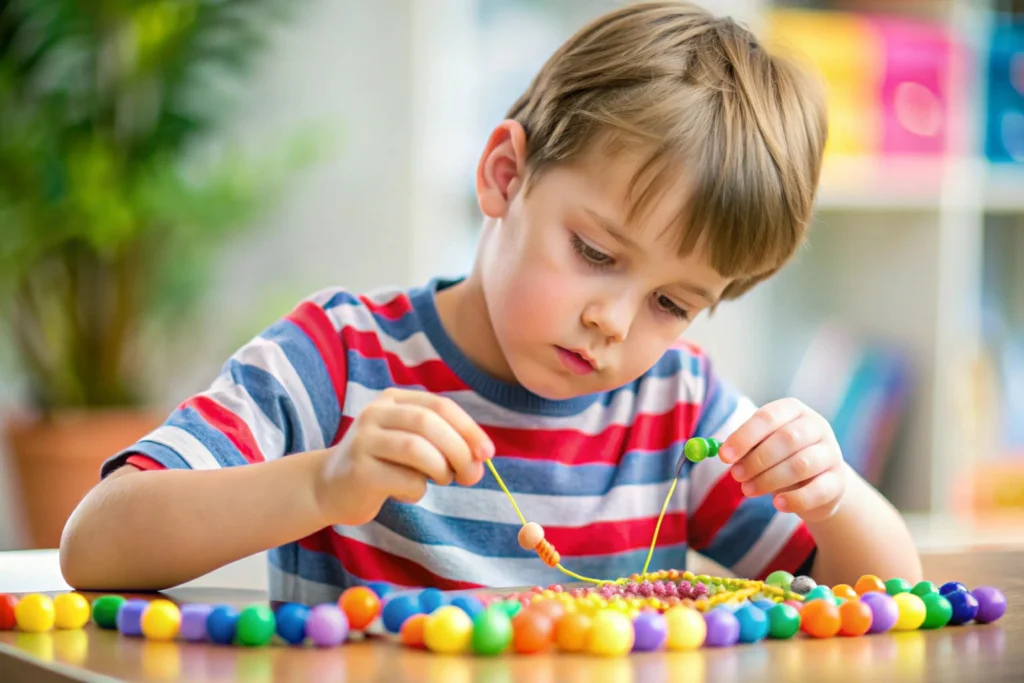Fine motor skills are vital for students in special education, aiding in the development of hand-eye coordination, dexterity, and independence. These skills are often the foundation for more complex tasks that students will encounter as they grow. In this article, we will explore ten effective fine motor tasks that can be seamlessly integrated into your special education program.
1. Bead Stringing

Bead stringing is an excellent activity for improving hand-eye coordination and developing a strong pincer grasp. Start with larger beads and strings, and gradually introduce smaller beads as the child’s skill level improves. This task also encourages patience and concentration, key components of successful motor skill development. Learn more about hands-on activities to build fine motor skills.
2. Playdough Manipulation
Manipulating playdough is not only fun but also incredibly beneficial for strengthening hand muscles. Encourage students to roll, pinch, flatten, and cut playdough. These activities build dexterity and can be adapted with various tools to keep the task engaging and challenging. Explore tools and toys that improve fine motor skills.
3. Cutting with Scissors
Cutting with scissors is a fundamental skill that enhances hand control and precision. Begin with simple straight lines, and as proficiency improves, introduce curves and shapes. Always ensure that the scissors used are appropriate for the child’s ability level to prevent frustration and promote success.
4. Buttoning and Zipping
Buttoning and zipping are practical tasks that foster independence and fine motor control. Using dressing boards or practicing on real clothing, students can learn to manage these everyday tasks. Mastery of buttoning and zipping not only improves motor skills but also boosts confidence in self-care abilities.
5. Pegboard Activities
Pegboard activities are fantastic for refining pincer grasp and improving hand-eye coordination. Students can place pegs into holes on a board, starting with simple designs and advancing to more complex patterns. This task promotes precision and can be adapted to suit various skill levels. Discover the importance of fine motor skills in special education.
6. Tweezer Games
Using tweezers to pick up small objects like beads or cotton balls helps students practice their grip and control. This task requires concentration and precision, making it a powerful tool for developing fine motor skills. Introduce varying sizes and shapes of objects to increase the challenge as the child’s skill level grows.
7. Lacing Cards
Lacing cards offer a fun and effective way to enhance hand-eye coordination and fine motor control. Students thread a lace through pre-punched holes in a card, practicing the movement needed for more complex tasks like sewing. This activity can be customized with different patterns and levels of difficulty.
8. Paper Tearing
Tearing paper is a simple yet effective way to strengthen hand muscles and improve fine motor control. Encourage students to tear paper into small pieces, which can then be used for art projects or added to sensory bins. This activity is particularly beneficial for students who may struggle with more structured tasks.
9. Sorting Small Objects
Sorting small objects, such as beads, buttons, or coins, into containers enhances fine motor precision and cognitive skills like categorization and sorting. This task can be tailored to different themes or educational goals, making it a versatile tool in the special education classroom.
10. Stacking Blocks
Stacking blocks or cups is a classic activity that builds hand-eye coordination and fine motor control. Starting with larger blocks and progressing to smaller ones, students can practice this task independently or as part of a group activity. The tactile feedback and visual success of a completed stack can be very rewarding.
Conclusion
Incorporating these fine motor tasks into your special education program can significantly enhance students’ motor skills, paving the way for greater independence and self-confidence. By consistently practicing and gradually increasing the complexity of these tasks, students can achieve meaningful progress in their fine motor development.